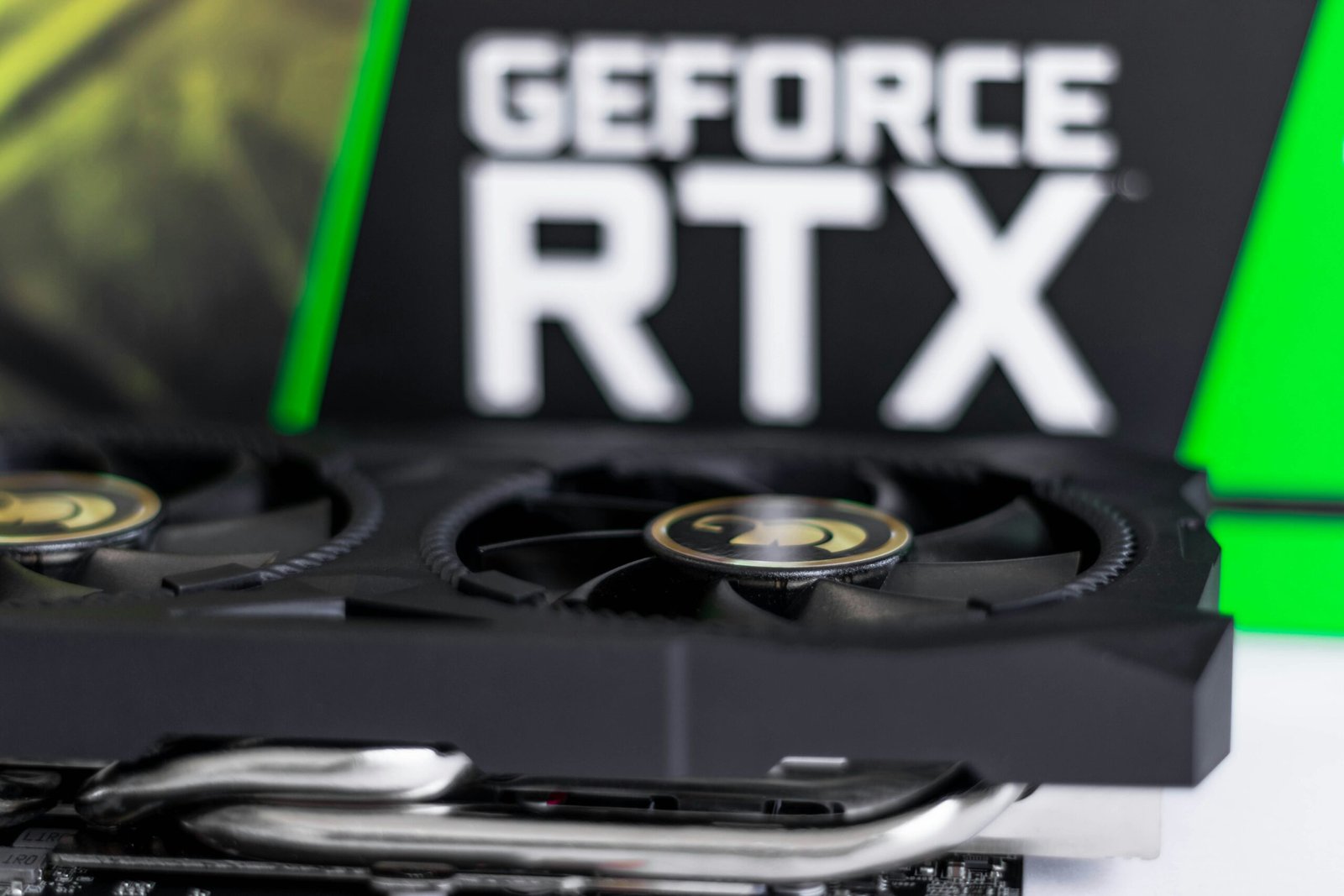Table of Contents
1. Introduction: The Genesis of Nvidia
2. Founding and Early Years (1993-1999)
3. Rise to Prominence (2000-2009)
4. Expansion into New Markets (2010-2019)
5. Looking into the future 2020 – 2024 and beyond
6. Technological Innovations and Milestones
7. Corporate Culture and Leadership
8. Future Outlook and Conclusion
1. Introduction: The Genesis of Nvidia
Nvidia, a technological pioneer, has established itself as a market leader in graphics processing units (GPUs) and artificial intelligence (AI) developments. Founded in 1993, the company has consistently pushed the boundaries of computer graphics and computational technologies. Nvidia’s GPUs have established the gold standard in gaming, professional graphics, data centers, and even automotive industries, making it an essential component of modern technology.
Nvidia’s tremendous impact on the technology industry cannot be emphasized. Its unique innovations have transformed areas from gaming to scientific study. For example, Nvidia’s CUDA architecture revolutionized parallel computing, allowing researchers and developers to use GPUs for increasingly complicated calculations and simulations. This has hastened progress in fields like as medical research, climate modeling, and financial analytics.
Understanding the history of Nvidia is critical for a variety of reasons. First, it sheds light on how technological improvements shape industries throughout time. Nvidia’s rise from a young startup to a global powerhouse demonstrates the value of innovation and strategic vision. Second, it emphasizes the importance of GPUs beyond gaming by demonstrating their larger uses in AI and machine learning, which are critical in today’s data-driven world. Finally, observing Nvidia’s history teaches key lessons about business flexibility and leadership in a constantly shifting market situation.
In the following sections, we will look deeper into the significant milestones and inventions that have shaped Nvidia’s trajectory. From its early days of manufacturing graphics cards to its current role in AI, we’ll look at how Nvidia has constantly reinvented itself to stay ahead of the curve in an industry notorious for rapid change. This detailed history seeks to provide a clear knowledge of Nvidia’s accomplishments and long-lasting impact on technology.
2. Founding and Early Years (1993-1999)
Jensen Huang, Chris Malachowsky, and Curtis Priem created Nvidia in 1993, recognizing the enormous potential of graphics processing in computing. The company’s initial goal was straightforward: to transform the graphics industry by developing sophisticated graphics processing units (GPUs) capable of handling more complicated visual computations. To navigate a rapidly expanding and fiercely competitive market, this ambitious goal necessitated not only technology innovation but also strategic savvy.
In its early years, Nvidia faced significant hurdles, including limited financial resources and fierce rivalry from established competitors in the graphics and semiconductor industries. Despite these challenges, the founders were motivated by a strong belief in their idea. They concentrated on creating a product that would stand out in the market, and their efforts culminated in the introduction of the NV1 in 1995. The NV1 was a ground-breaking product that had new features including quadratic texture mapping and integrated audio capabilities, distinguishing it from other graphics solutions available at the time.
However, the NV1 did not achieve rapid commercial success. It had compatibility concerns with major gaming applications and struggled to gain momentum on the market. Nvidia’s early obstacles did not dissuade the founders; rather, they generated critical lessons that influenced subsequent strategic decisions. One such move was to adopt a more standardized approach to graphics processing, consistent with Microsoft’s DirectX technology. This move proved essential, allowing Nvidia to better satisfy the changing needs of the gaming and graphics industries.
By the end of the 1990s, Nvidia had established a solid base for future expansion. The company’s perseverance and adaptation in its early years enabled it to survive and subsequently grow in a competitive environment. The lessons learnt during this time shaped Nvidia’s direction, laying the groundwork for the company’s emergence as a leader in the graphics processing sector.
3. Rise to Prominence (2000-2009)
The early 2000s were a watershed moment in Nvidia’s history, defined by the company’s rise to prominence in the graphics processing unit (GPU) sector. The GeForce series, which debuted in 1999 with the revolutionary GeForce 256, was key to this rise. The GeForce 256, dubbed the world’s first GPU, featured breakthrough innovations such as hardware transform and lighting (T&L), establishing a new standard for 3D graphics performance and realism. This breakthrough not only set Nvidia apart from its competitors, but also lay the groundwork for future developments.
Building on the success of the GeForce 256, Nvidia continued to push technological boundaries with the release of the GeForce 2, GeForce 3, and GeForce 4 series throughout the early 2000s. These iterations introduced features such as programmable shaders, improved memory architectures, and enhanced antialiasing techniques. The GeForce 3, in particular, was notable for its programmable pixel and vertex shaders, which provided developers with unprecedented flexibility and control over graphical effects. This period of rapid technological innovation solidified Nvidia’s reputation as a leader in the GPU industry.
Strategic alliances also played an important role in Nvidia’s growth. Collaborations with major gaming and software firms, like Microsoft, have enabled Nvidia to incorporate its GPUs into a diverse range of platforms and applications. The company’s partnership with Microsoft was especially significant, as Nvidia’s technology was used in the Xbox game system, increasing its market reach and impact.
In 2004, Nvidia introduced Scalable Link Interface (SLI) technology, which consolidated the company’s dominance. SLI allowed multiple GPUs to operate together, dramatically improving performance in high-end gaming and professional applications. This innovation targeted hobbyists and professionals looking for greater graphical performance, expanding Nvidia’s consumer base.
During this decade, Nvidia’s market dynamics were also shaped by its strategic acquisitions, such as the purchase of 3dfx in 2000, which eliminated a key competitor and integrated valuable intellectual property. By the end of the 2000s, Nvidia had firmly established itself as a leader in the GPU market, driven by continuous innovation, strategic alliances, and a keen understanding of market needs.
4. Expansion into New Markets (2010-2019)
During the decade from 2010 to 2019, Nvidia considerably expanded its boundaries by entering new areas beyond its usual bastion of gaming graphics. One of the most notable breakthroughs was the launch of the CUDA (Compute Unified Device Architecture) platform. CUDA, which was created to ease parallel computing, enabled developers to use Nvidia GPUs for a wide range of computationally intensive activities, signaling a significant shift toward data centers and high-performance computing.
In parallel, Nvidia achieved important advances in the field of artificial intelligence (AI). The company’s GPUs became the foundation for AI research and applications, because to their unrivaled ability to handle large datasets and complicated algorithms effectively. This emphasis on AI was reinforced by the creation of the Tesla product line, which was specifically intended for scientific computing, deep learning, and AI workloads. Tesla GPUs helped propel Nvidia to the forefront of the AI revolution.
Another key milestone in Nvidia’s growth was its entry into driverless vehicles. Nvidia created the DRIVE platform, leveraging its experience in AI and high-performance computing, to help with the development of self-driving automobiles. The platform included a package of hardware and software solutions designed specifically for autonomous driving, demonstrating Nvidia’s commitment to this developing market.
Nvidia’s growth strategy also involves significant acquisitions to boost its foothold in these new markets. One such example is the acquisition of Mellanox Technologies in 2019. Mellanox’s high-performance networking technologies supplemented Nvidia’s GPU expertise, expanding the company’s capabilities in data centers and cloud computing. This acquisition demonstrated Nvidia’s intention to create a holistic ecosystem capable of meeting the different needs of modern computing.
Furthermore, the creation of the Quadro product line demonstrated Nvidia’s dedication to professionals in fields such as design, engineering, and multimedia. Quadro GPUs were designed to fulfill the demands of professional visualization, providing enhanced features and performance tailored to the unique needs of these industries.
Overall, Nvidia’s development into new markets from 2010 to 2019 was characterized by strategic inventions and acquisitions that broadened its portfolio and consolidated its position as a leader in a number of fast-growing industries. These decisions not only fuelled the company’s success, but also laid the groundwork for its continued evolution in the years ahead.
5. Looking into the future 2020 – 2024 and beyond
As of this writing (2024), Nvidia is still on its journey to outgrow the competitors and become the market’s dominant player. With the advent of new technologies and innovations, Nvidia’s rise to the top appears unstoppable. During this period, they have introduced:
- Data Center Processors for Analytics and AI: Nvidia’s revenues reached $22.1 billion in the last quarter of 2024—a 265% jump from the year before.
- H100 Graphics Cards: Each card is made up of 80 billion transistors and can compute vast amounts of data used in training large language models.
- Ampere GPU Microarchitecture: This technology was announced in 2020, along with the NVIDIA A100 GPU accelerator.
- Open-Source Ventilator: In 2020, Nvidia scientists developed an open-source ventilator.
- GeForce GPUs: Nvidia launched the GeForce RTX 3080 GPU and the GeForce RTX 3070 GPU in 2020.
With “Unlimited Resources” the sky is the limit when it comes to how much they can develop.
6. Technological Innovations and Milestones
Nvidia has consistently been at the forefront of technological innovation, with a substantial impact on the computing and graphics technology scene. One of the most significant milestones in Nvidia’s history was the release of the GeForce 256 in 1999, which was billed as the world’s first GPU. This invention revolutionized graphics processing, elevating it from a minor component to a critical component in computers.
The business continued to develop with the introduction of the Tesla architecture in 2006, which was designed for high-performance computing and scientific research. This era heralded Nvidia’s entry into parallel computing, in which GPUs were used for complicated computational tasks that went far beyond simple graphics rendering. Tesla GPUs have become useful in industries such as climate research, medical imaging, and oil and gas exploration.
Nvidia launched the Turing architecture in 2018, a game-changing development that brought real-time ray tracing and AI-enhanced graphics into the mainstream. Turing GPUs, such as the GeForce RTX 2080, include Tensor Cores to speed up AI workloads, making them essential for gamers, professionals, and researchers alike. This architecture also paved the way for Nvidia’s contributions to artificial intelligence, enabling advances in neural network training and inference.
The subsequent release of the Ampere architecture in 2020 cemented Nvidia’s leadership. Ampere GPUs, such as the GeForce RTX 3080, provided exceptional performance gains, thanks to improved Ray Tracing and Tensor Cores. These breakthroughs not only improved gaming experiences, but also boosted AI and deep learning applications in a variety of industries, including autonomous vehicles and healthcare.
Nvidia’s significance goes beyond technological advancements. The invention of CUDA (Compute Unified Device Architecture) has enabled developers to fully utilize GPU acceleration in software applications. CUDA has become an essential tool for researchers and engineers, enabling breakthroughs in AI, deep learning, and scientific computing.
Nvidia’s constant pursuit of innovation has had a profound impact on a wide range of industries, including gaming and entertainment, scientific research, and artificial intelligence. Nvidia has changed GPU technology while also setting new norms for the future of computing.
7. Corporate Culture and Leadership
Nvidia’s company culture is inextricably linked to the vision and leadership of its co-founder and CEO, Jensen Huang. Since the company’s establishment in 1993, Huang’s leadership style has been defined by a tireless pursuit of innovation and a dedication to quality. Under his leadership, Nvidia has created a culture that values risk-taking, creativity, and constant learning, which has been critical to the company’s growth and success in the highly competitive technology business.
Nvidia’s basic principles include a confidence in technology’s ability to alter industries and improve people’s lives. This value is mirrored in the company’s mission: to tackle challenging challenges using advanced computing. Employees are encouraged to dream large and question the established quo, resulting in groundbreaking advances in graphics processing units (GPUs), artificial intelligence (AI), and deep learning.
Jensen Huang’s leadership is frequently characterized as visionary and hands-on. He is noted for his extensive technical knowledge and ability to predict industry trends. This foresight has allowed Nvidia to successfully pivot and adapt to changing market demands. Huang’s style of leadership is also inclusive and collaborative. He places a high value on teamwork and believes that the best ideas can originate from anywhere in the business.
According to top leaders and staff, Nvidia’s corporate culture prioritizes mutual respect and constant improvement. As one executive stated, “Jensen leads by example. His passion and determination motivate everyone to push the limits of what is possible.” This feeling is shared by many Nvidia employees, who value the company’s open and transparent communication channels.
Furthermore, Nvidia’s commitment to diversity and inclusion has played a crucial role in its success. The organization actively encourages a diverse staff, recognizing that different perspectives fuel creativity. This inclusive attitude has allowed Nvidia to attract top talent from all over the world, cementing its position as a tech industry leader.
In essence, Jensen Huang’s innovative leadership has established Nvidia’s corporate culture, which combines innovation, cooperation, and diversity. This distinct culture has not only fueled the company’s technological breakthroughs, but has also fostered an environment in which employees feel empowered to produce their best work.
Nvidia, like many industry leaders, has navigated a complicated landscape fraught with hurdles and controversy. Over the years, the corporation has encountered several legal fights, fierce rivalry, supply chain problems, and public relations challenges. One noteworthy legal concern happened in 2008, when Nvidia was named in a class-action lawsuit over defective GPUs. The substandard goods caused several failures, forcing Nvidia to settle the claim and review its quality control procedures. This tragedy had a substantial impact on the company’s financial situation and demonstrated the significance of comprehensive product testing.
Another ongoing problem has been competing with other tech behemoths such as AMD and Intel. To remain competitive in the fast changing semiconductor business, Nvidia has had to constantly innovate. The battle is especially fierce in the gaming and data center areas, where Nvidia’s GPUs are frequently scrutinized. Despite these hurdles, Nvidia has maintained a competitive advantage by strategic acquisitions, such as the 2019 purchase of Mellanox Technologies, which strengthened its position in the data centre sector.
Supply chain difficulties have also presented considerable challenges. The global semiconductor scarcity, exacerbated by the COVID-19 epidemic, hampered Nvidia’s production capacities and reduced product availability. To deal with these disruptions, Nvidia has diversified its supply chain and invested in long-term supplier relationships. These strategic decisions have helped the corporation negotiate the intricacies of global supply chains more efficiently.
Public relations issues have occasionally harmed Nvidia’s reputation. Controversies concerning the company’s business methods have arisen, including allegations of anti-competitive activities in the graphics card market. Nvidia has taken steps to resolve these challenges, including open communication and adherence to regulatory norms. These actions have helped to rebuild public trust and reaffirm Nvidia’s dedication to ethical corporate practices.
In the face of these problems and debates, Nvidia displayed tenacity and adaptability. The company’s capacity to learn from previous mistakes, innovate in the face of competition, and effectively handle supply chain and public relations difficulties has led to its long-term growth and success in the technology industry.
8. Future Outlook and Conclusion
Nvidia’s trend in the technology world remains one of innovation and growth. As we look ahead, various rising technology and market prospects will help shape the company’s future. Notably, Nvidia’s advances in artificial intelligence (AI) and machine learning are projected to drive the trend. The company’s AI-powered platforms, such as the Nvidia AI Enterprise and the Nvidia Omniverse, are poised to transform a variety of industries by delivering powerful tools for simulation, design and automation.
In the gaming market, Nvidia’s GeForce RTX series continues to push the limits of real-time ray tracing and AI-enhanced graphics. The next generation of GPUs is expected to produce even greater performance gains, meeting the needs of increasingly complex games and virtual reality experiences. Furthermore, Nvidia’s dedication to cloud gaming via its GeForce NOW service is a purposeful effort to reach a larger audience by providing high-quality gaming experiences without the need for expensive hardware.
Beyond games and AI, Nvidia is making progress in the car business. The Nvidia DRIVE platform is poised to play a critical role in autonomous vehicle development, providing a comprehensive portfolio of AI hardware and software solutions that enable safe and efficient self-driving technology. This is consistent with the overall trend of smart transportation and the growing adoption of electric vehicles, where Nvidia’s technology can deliver major improvements in safety and efficiency.
Strategically, Nvidia intends to maintain its leadership position by pursuing collaborations and acquisitions that complement its core skills. The company’s recent acquisition of Arm Holdings exemplifies this strategy, which could boost Nvidia’s clout in the semiconductor sector and improve its ability to create energy-efficient CPUs for a variety of applications.
In conclusion, Nvidia’s future is bright, thanks to its continuous emphasis on innovation and strategic expansion. As the corporation navigates evolving technologies and commercial prospects, its influence on the technology industry is likely to grow even stronger. Whether through improvements in AI, gaming, or autonomous driving, Nvidia is well-positioned to remain at the vanguard of technological progress, influencing the future in significant ways.


